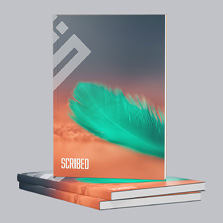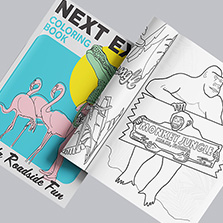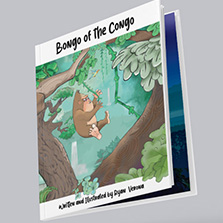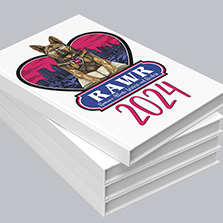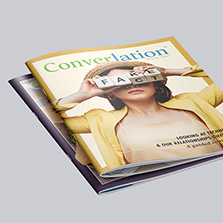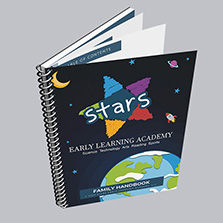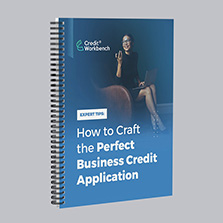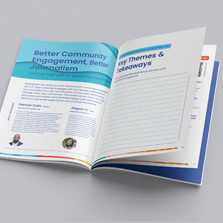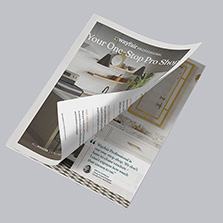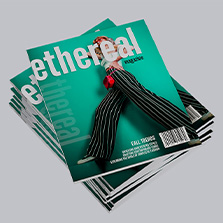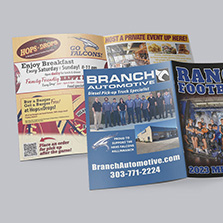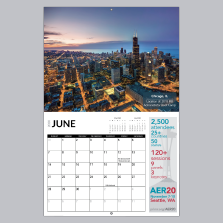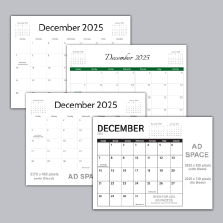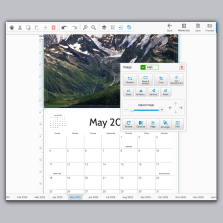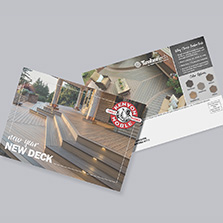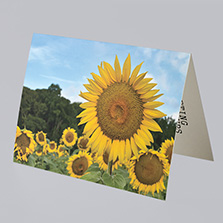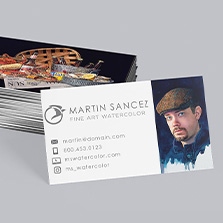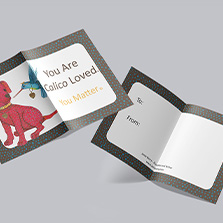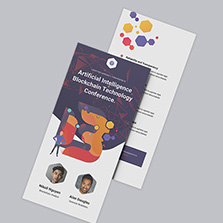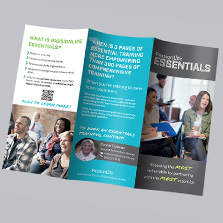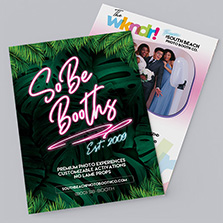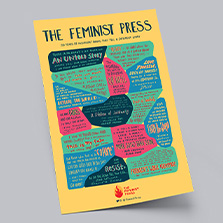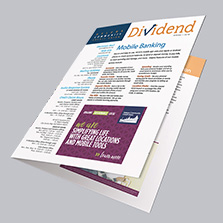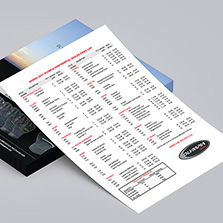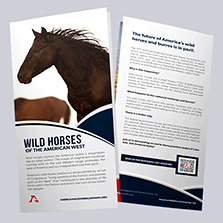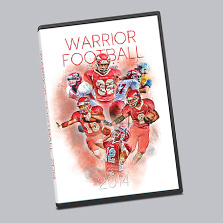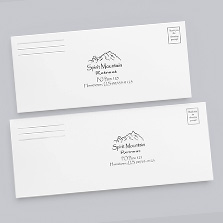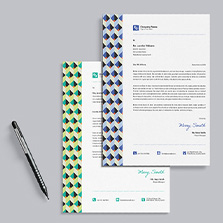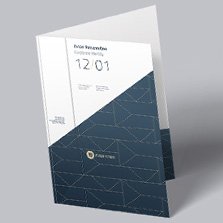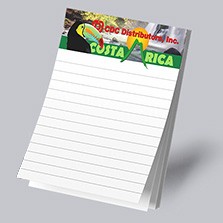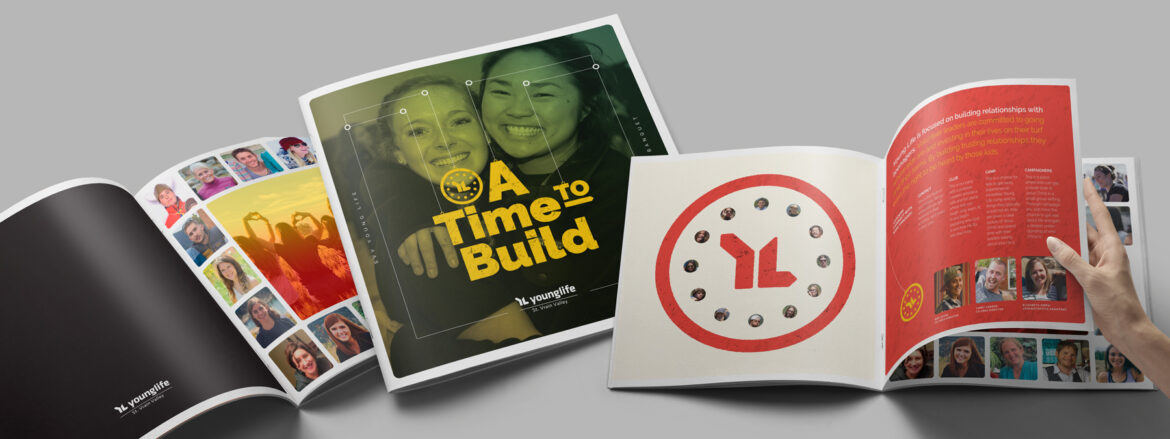
The 5 Best Print Marketing Materials in 2024
What is the secret to mastering your print marketing materials in 2024?
How do you distinguish the truly impactful from the merely trendy? With a plethora of choices unfolding before you, understanding the types and impacts of various print marketing materials is key to crafting campaigns that resonate with your audience.
From the experts at PrintingCenterUSA, with over 50 years of industry experience, comes a curated list of the top 5 print marketing materials for 2024. These selections are not just about staying ahead of trends; they’re about leveraging proven strategies to make a meaningful connection with your customers. In this journey, we’ll explore how Catalogs, Brochures, Direct Mail Postcards, Booklets, and Calendars can effectively convey your brand’s message and leave a lasting impression.
Ready to uncover the keys and unlock the true potential of print marketing?
Now, let’s get down to business.
Here are The Top 5 Print Marketing Materials for 2024:
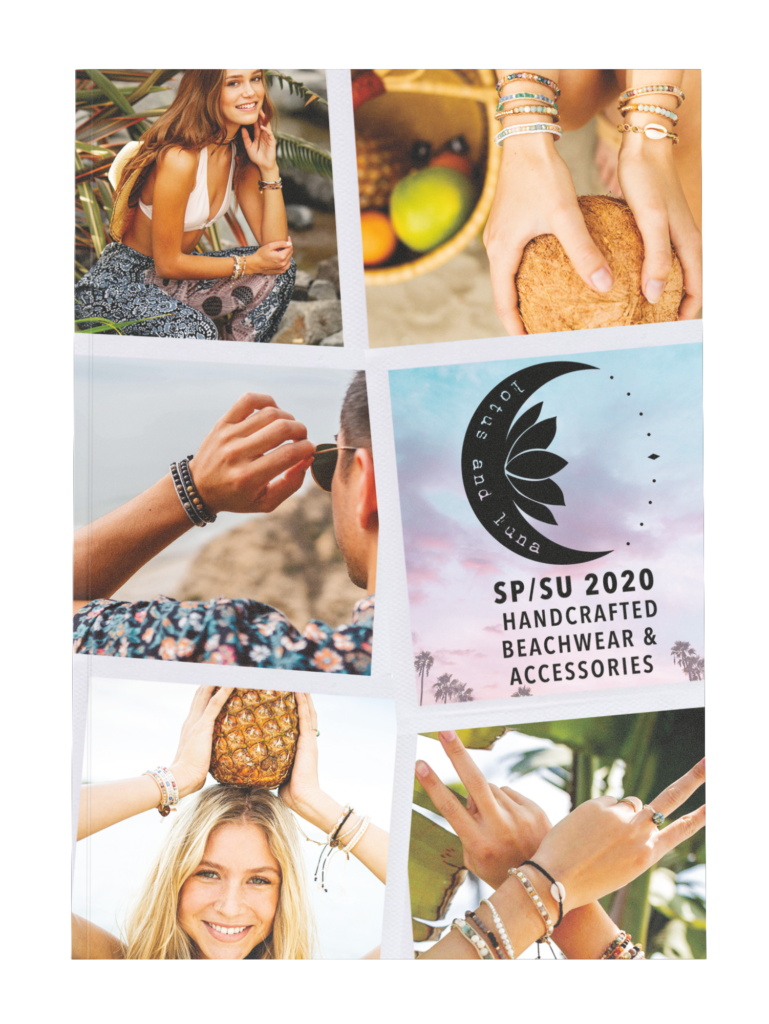
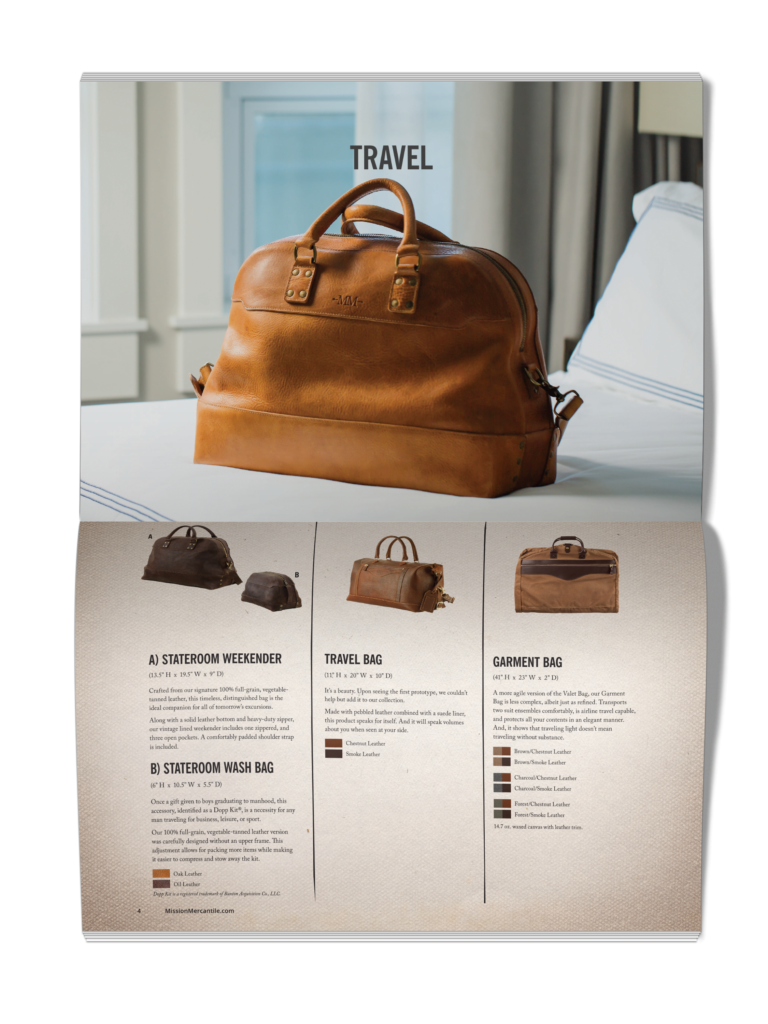
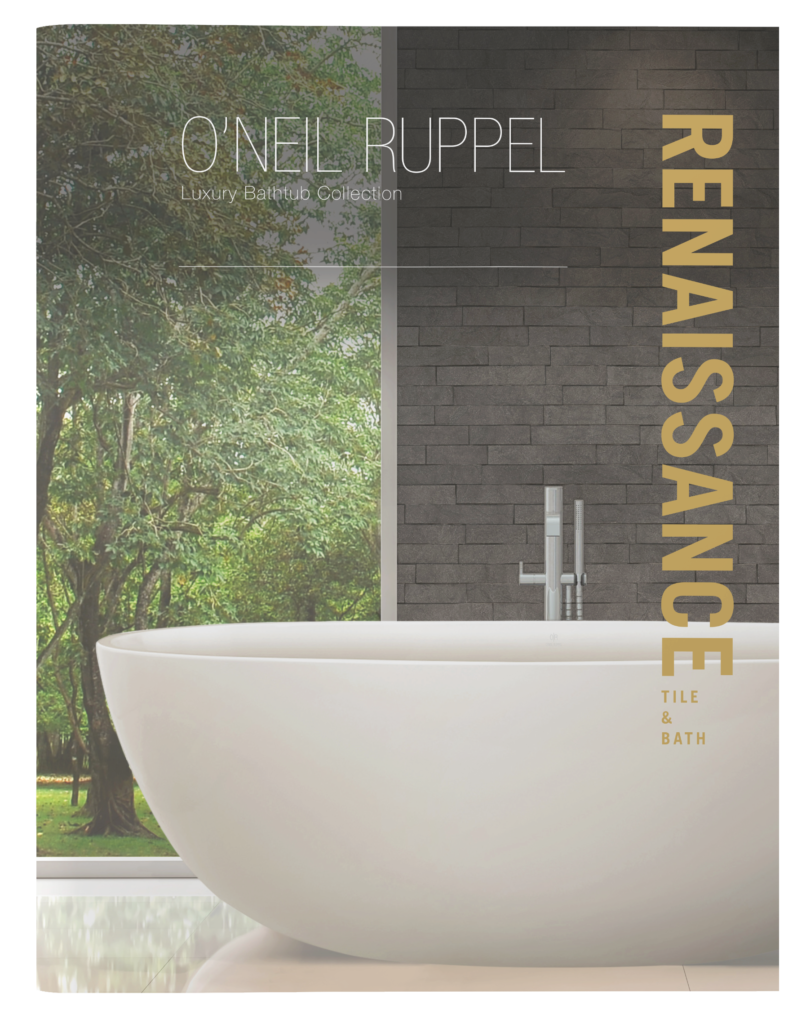
1. Catalogs: Your Powerhouse of Customer Engagement
Catalogs have evolved into powerful storytelling tools, offering a visually captivating and informative way to present products or services.
Types of Catalogs
- Product Catalogs: These are perhaps the most common, showcasing a company’s full range of products. For instance, IKEA’s annual catalog presents their furniture and home accessories in lifestyle settings, inspiring customers and providing comprehensive product information.
- Service Catalogs: Used by service-oriented businesses like travel agencies or event planners, these catalogs detail the services offered. An example is the catalog of a travel agency, which might feature destination packages, highlighting activities, accommodations, and pricing.
- Fashion Catalogs: Highly visual, these catalogs are used by clothing and accessory brands to display their latest collections. They often incorporate high-quality photography and storytelling elements to create a mood or brand image, as seen in Vogue’s seasonal fashion spreads.
- Educational Catalogs: Used by educational institutions or companies in the learning sector, these catalogs list courses, training programs, and learning materials. For instance, a university’s course catalog, providing detailed descriptions of courses, faculty, and campus facilities.
- Corporate Catalogs: These are used to showcase a company’s identity, values, and history, often distributed to stakeholders and potential investors. They might include annual reports, CSR initiatives, and company milestones.
Impact of Catalogs in Print Marketing Materials
- Brand Engagement: Enhances connection with customers.
- Direct Sales Driver: Encourages immediate purchases.
- Educational Tool: Helps in making informed decisions.
- Investor Relations: Strengthens investor confidence.
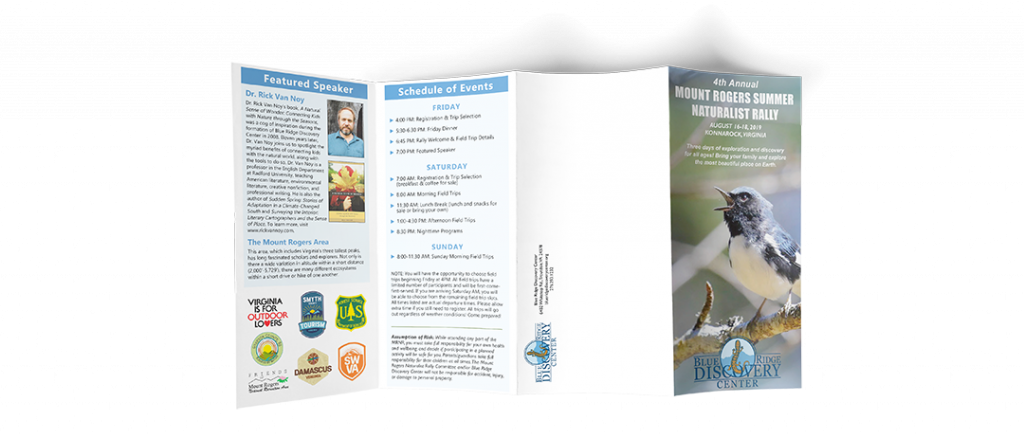
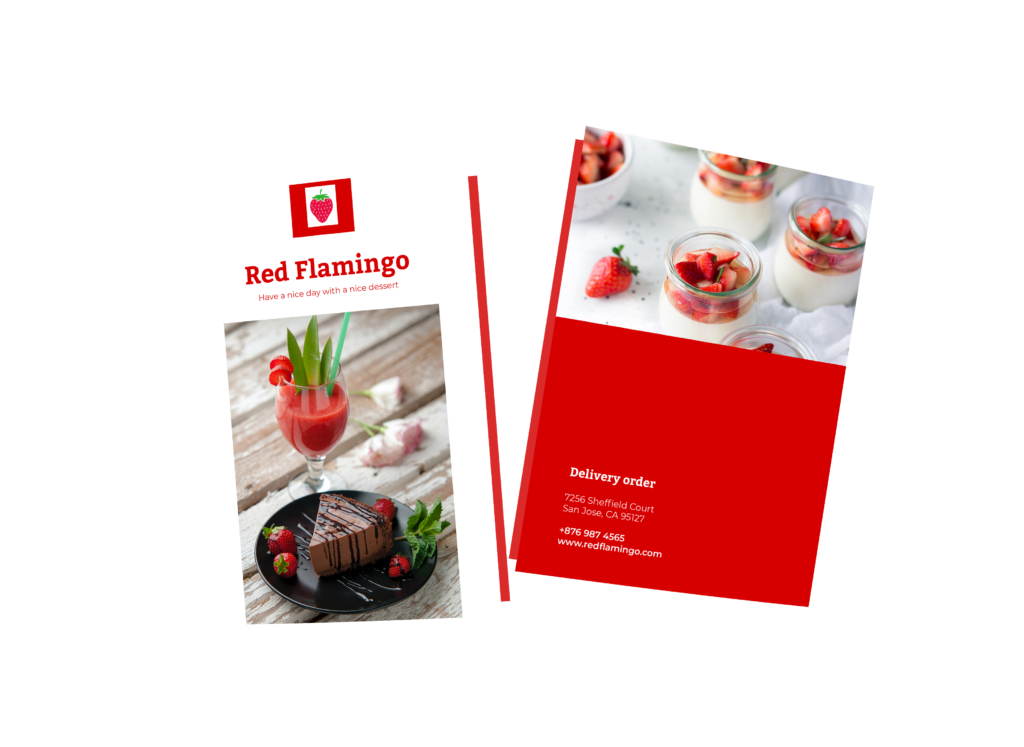
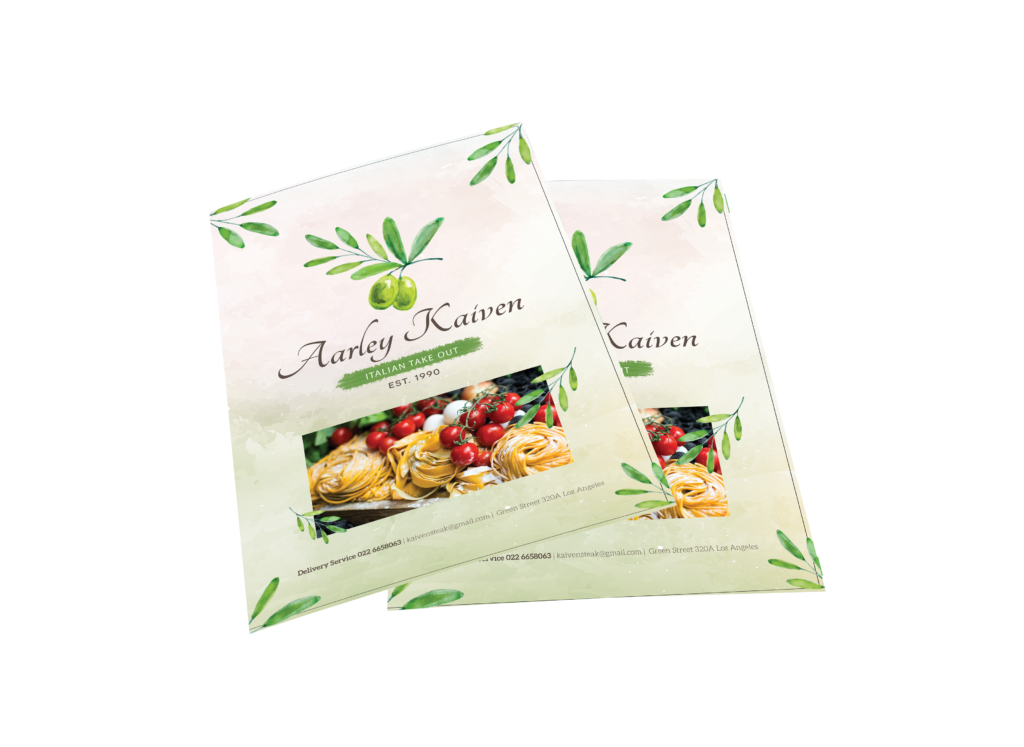
2. Brochures: Your Cornerstone of Effective Communication
Brochures offer a versatile way to convey detailed information in a compact and visually appealing format.
Types of Brochures
- Tri-fold Brochures: The most common brochure, characterized by three panels on each side. They’re compact and ideal for mailing campaigns, trade shows, and handouts. For instance, a restaurant might use a tri-fold brochure to present its menu, location, and ambiance.
- Bi-fold Brochures: With one central fold creating four panels, bi-fold brochures offer more space for information and are often used for product guides or corporate presentations. An example could be a real estate company showcasing property details and agent profiles.
- Leaflets and Flyers: Single-page and without folds, these are perfect for concise messages or promotions. They are commonly used for event announcements or special offers in retail.
- Gatefold Brochures: These have a central section flanked by two inward-folding panels, creating an impactful reveal, suitable for high-end product launches or corporate services. Luxury brands often use gatefold brochures for a dramatic presentation of a new product line.
- Z-fold Brochures: Resembling an accordion, the Z-fold is a variation of the tri-fold but opens up fully, allowing for a sequential reveal of information. It’s particularly effective for instructional content or timelines.
Impact of Brochures in Print Marketing Materials
- Concise Communication: Delivers key points effectively.
- Brand Presentation: Offers an overview of a company’s offerings.
- Promotional Tool: Effective for marketing campaigns.
- Luxury Marketing: Adds exclusivity to branding.
- Informational Clarity: Organizes information logically.
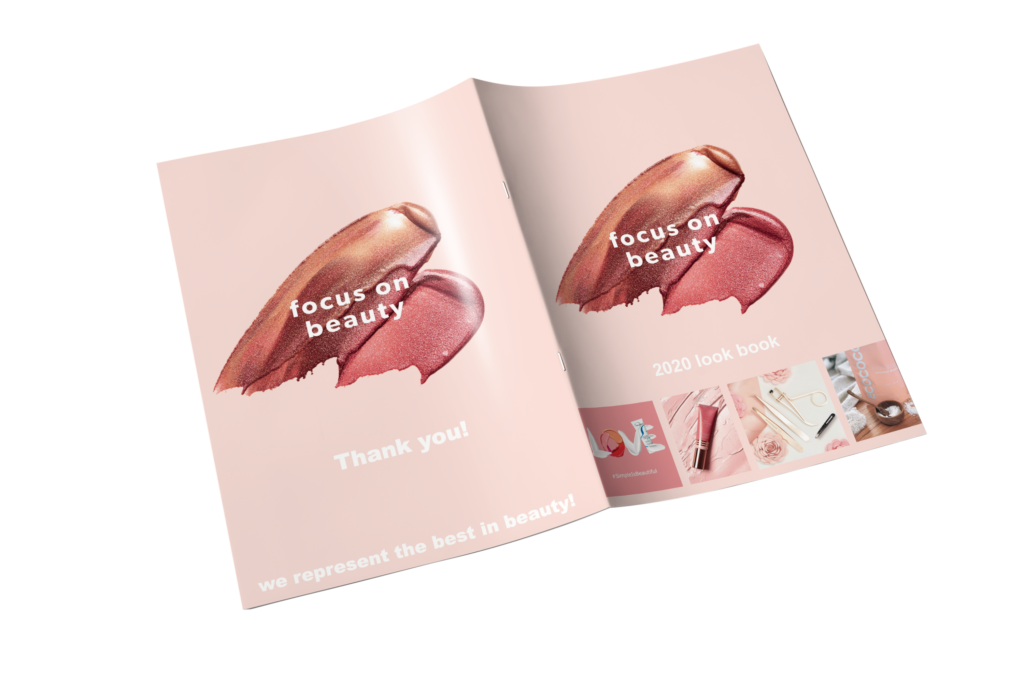

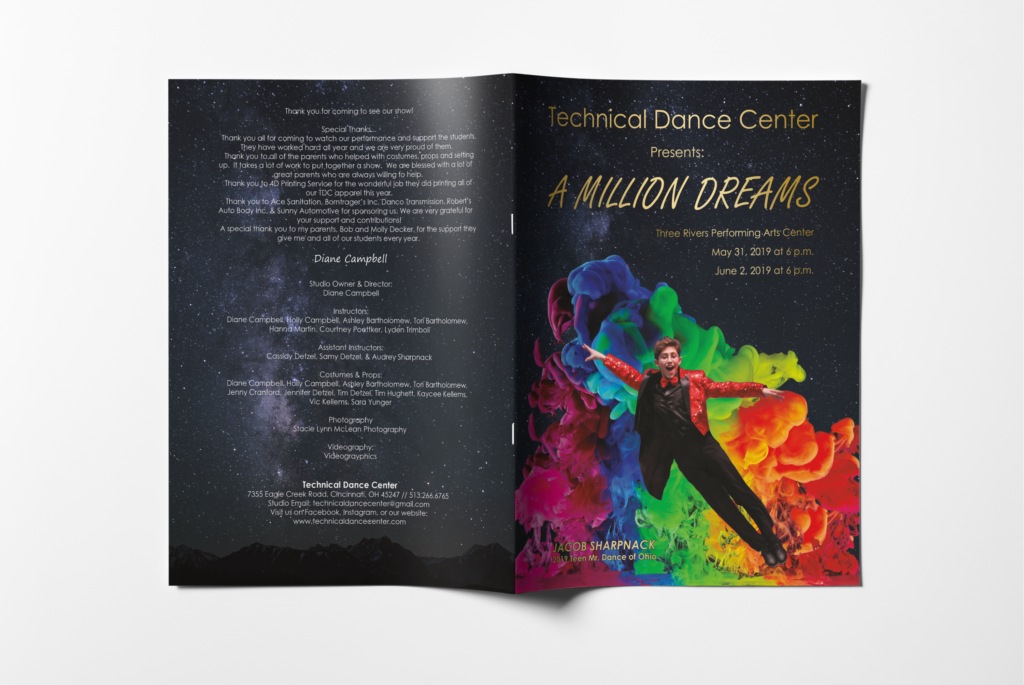
3. Booklets: Your Gateway to In-Depth Storytelling
Booklets are ideal for sharing comprehensive information, combining narrative depth with design.
Types of Booklets
- Marketing Booklets: These booklets are designed to promote products, services, or brand identity. They often include compelling imagery, persuasive copy, and case studies or testimonials. For example, a new technology firm might use a marketing booklet to introduce its innovative products and highlight their unique features and benefits.
- Community and Non-Profit Booklets: Utilized by community organizations and non-profits, these booklets detail missions, initiatives, and community impact stories. They are crucial for awareness campaigns, fundraising events, and fostering community involvement.
- Training and Educational Booklets: These provide comprehensive information for training programs or workshops, serving as valuable resources for skill development or education. A cooking school, for instance, might produce a booklet with detailed recipes and cooking techniques.
- Annual Review Booklets: Businesses use these to summarize yearly achievements, financial performance, and future objectives. They’re essential for stakeholder meetings, offering a transparent overview of corporate health and strategy.
- Health and Wellness Guides: In the healthcare sector, these booklets offer insights into health practices, wellness tips, and medical procedures, serving as educational tools for patients and healthcare clients.
Impact of Booklets in Print Marketing Materials
- Effective Promotion: Influences purchasing decisions.
- Community Connection: Engages and informs community members.
- Learning and Development: Enhances educational effectiveness.
- Corporate Communication: Shares company progress.
- Health Awareness: Educates on health topics.
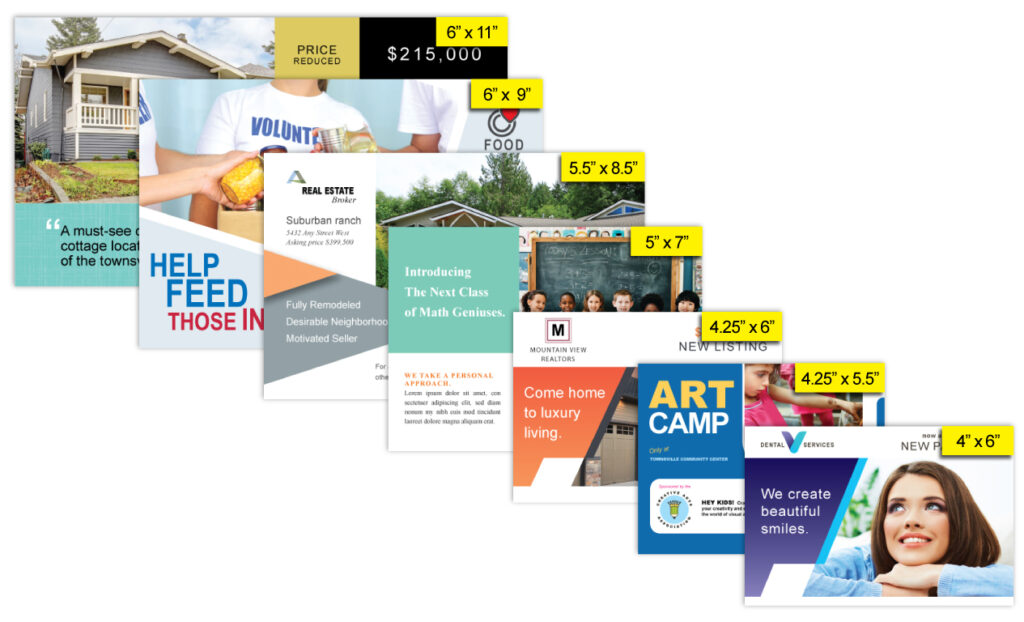
4. Direct Mail Postcards: Your Key to Personalized Connected
Direct Mail Postcards are a highly effective and personal way to reach out to customers. Their simplicity, cost-effectiveness, and direct approach make them a favorite in many marketing strategies.
Types of Direct Mail Postcards
- Promotional Postcards: These are used for advertising sales, special offers, or new product launches. For example, a retail store might send out postcards to announce a seasonal sale or a new store opening.
- Event Postcards: Sent to announce events like grand openings, special guest appearances, or exclusive events. A local art gallery might use event postcards to invite the community to a new exhibit opening.
- Reminder Postcards: Often used by service providers like dentists or auto mechanics to remind clients about upcoming appointments or service needs.
- Thank You Postcards: Used to express gratitude to customers after a purchase or interaction, enhancing customer loyalty. For instance, a boutique might send thank you postcards to customers after a purchase, perhaps including a discount on their next visit.
- Informational Postcards: These provide valuable information or tips related to a company’s products or services. A gardening supply store, for example, could send out postcards with seasonal gardening tips.
Impact of Direct Mail Postcards in Print Marketing Materials
- Immediate Attention: Captures the recipient’s interest swiftly.
- Increased Attendance: Boosts event turnout.
- Customer Retention: Promotes repeat business.
- Enhanced Customer Relationships: Strengthens brand loyalty.
- Educational Engagement: Positions the brand as a helpful resource.
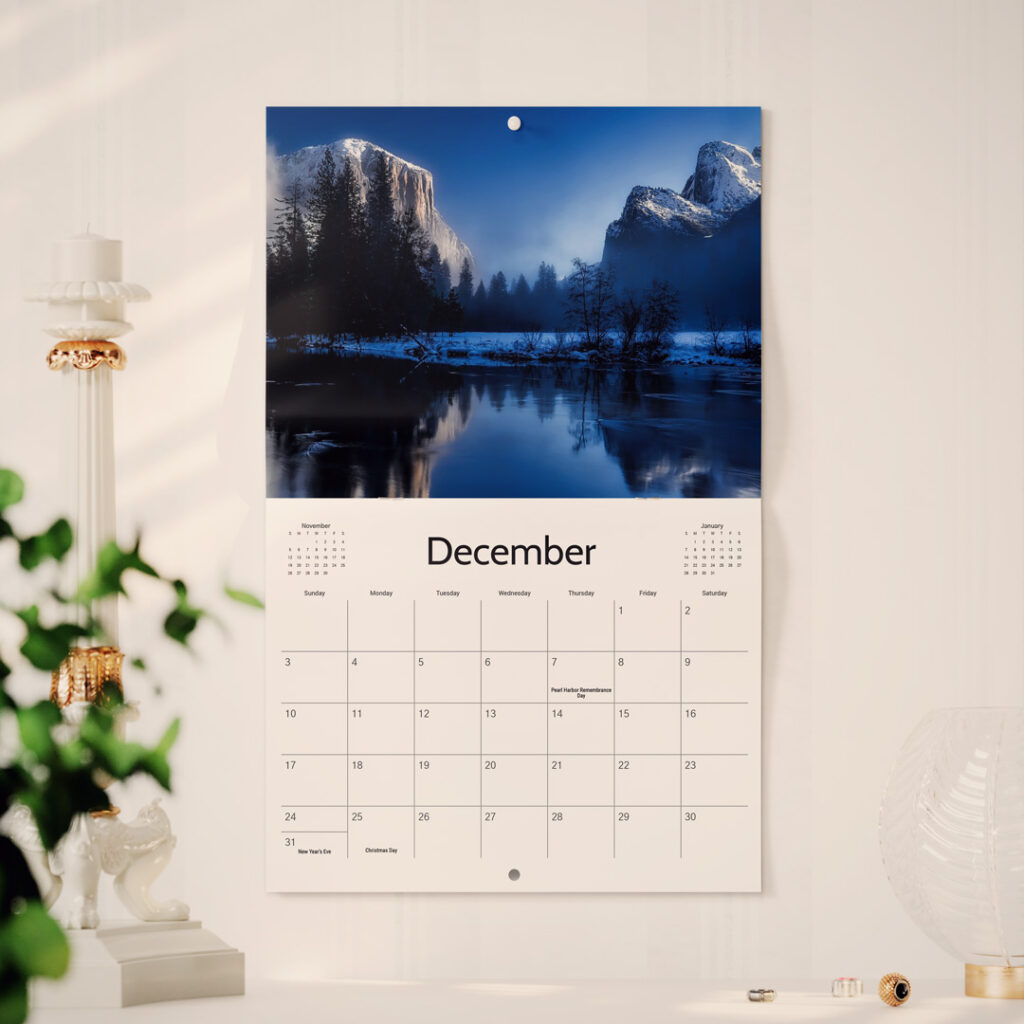


Calendars: Your Daily Reminder of Brand Presence
Calendars offer a unique opportunity for year-round brand visibility and daily customer engagement.
Types of Calendars
- Wall Calendars: Popular for their visibility and size, ideal for showcasing high-quality imagery. For instance, an environmental NGO might use wall calendars featuring breathtaking landscapes to raise awareness and connect with its audience.
- Desk Calendars: Perfect for office environments, these offer daily brand presence. A financial consulting firm, for instance, could use desk calendars to provide regular financial tips, keeping their services top of mind for clients.
- Fundraising Calendars: Often used by schools, non-profits, and community groups, these calendars can feature community-contributed artwork or photographs to raise funds for specific causes or projects.
- Promotional Calendars: These are designed as giveaways at events, trade shows, or through direct mail. A travel company, for instance, might create promotional calendars with stunning travel destinations to inspire potential customers and keep their services in mind.
- Themed Calendars: Centered around specific themes like health, art, or inspirational quotes. A fitness center, for example, might produce a themed calendar with monthly health challenges and wellness tips.
Impact of Calendars in Print Marketing Materials
- Brand Visibility: Ensures continuous brand exposure.
- Daily Engagement: Keeps the brand in frequent view.
- Community Engagement: Aids in fundraising and social causes.
- Marketing Reach: Expands brand reach through giveaways.
- Value and Relevance: Aligns with customer interests, enhancing connection.
Frequently Asked Questions
What is a print marketing material? Print marketing materials are tangible items used to promote a brand or communicate a message, ranging from brochures and catalogs to postcards and calendars.
What are examples of print materials? Examples include catalogs, brochures, direct mail postcards, booklets, and calendars, each with different marketing purposes.
What is an example of a marketing material? A classic example is a brochure that details a company’s services or products, often used in presentations or at trade shows.
Why use printed marketing materials? Printed materials provide a tangible, memorable experience, often leading to higher engagement and retention rates compared to digital-only strategies.
Why is print marketing effective? Print marketing is effective due to its physical nature, leaving a lasting impression and complementing digital marketing by reaching audiences in a more personal way.
In Conclusion
With so many options in print marketing materials, the right choices can make all the difference. Whether it’s the detailed narrative of a booklet, the targeted appeal of a direct mail postcard, or the year-round presence of a calendar, each print marketing material holds the potential to significantly elevate your brand’s message.
At PrintingCenterUSA, we understand the importance of these choices. With over 50 years of experience, we stand as your trusted experts in the industry. Our commitment to quality is matched by our dedication to your satisfaction, offering a free file review to ensure your prints are exactly as envisioned. For all your print marketing needs, choose PrintingCenterUSA – where experience meets excellence.

